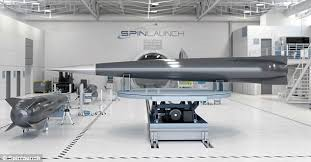
Breaking News
 Windows 10 is DEAD in 2025? -- Here's How I Run It SAFELY Forever (No Updates)
Windows 10 is DEAD in 2025? -- Here's How I Run It SAFELY Forever (No Updates)
 GENIUS ACT TRIGGERED: The Biggest BANK RUN in History is COMING – Prepare NOW
GENIUS ACT TRIGGERED: The Biggest BANK RUN in History is COMING – Prepare NOW
 European Billionaires Funneled $2 Billion into NGO Network to Fund Anti-Trump Protest Machine
European Billionaires Funneled $2 Billion into NGO Network to Fund Anti-Trump Protest Machine
 Japan Confirms Over 600,000 Citizens Killed by COVID mRNA 'Vaccines'
Japan Confirms Over 600,000 Citizens Killed by COVID mRNA 'Vaccines'
Top Tech News
 Japan just injected artificial blood into a human. No blood type needed. No refrigeration.
Japan just injected artificial blood into a human. No blood type needed. No refrigeration.
 The 6 Best LLM Tools To Run Models Locally
The 6 Best LLM Tools To Run Models Locally
 Testing My First Sodium-Ion Solar Battery
Testing My First Sodium-Ion Solar Battery
 A man once paralyzed from the waist down now stands on his own, not with machines or wires,...
A man once paralyzed from the waist down now stands on his own, not with machines or wires,...
 Review: Thumb-sized thermal camera turns your phone into a smart tool
Review: Thumb-sized thermal camera turns your phone into a smart tool
 Army To Bring Nuclear Microreactors To Its Bases By 2028
Army To Bring Nuclear Microreactors To Its Bases By 2028
 Nissan Says It's On Track For Solid-State Batteries That Double EV Range By 2028
Nissan Says It's On Track For Solid-State Batteries That Double EV Range By 2028
 Carbon based computers that run on iron
Carbon based computers that run on iron
 Russia flies strategic cruise missile propelled by a nuclear engine
Russia flies strategic cruise missile propelled by a nuclear engine
 100% Free AC & Heat from SOLAR! Airspool Mini Split AC from Santan Solar | Unboxing & Install
100% Free AC & Heat from SOLAR! Airspool Mini Split AC from Santan Solar | Unboxing & Install
Spinlaunch has $40 million to fund development to first centrifuge space launch by 2022

This syndicate joins institutional investors including Lauder Partners, ATW Partners, Bolt, and Starlight Ventures to total $40 million. Investment funds will be used to scale the team and technology, through first launch by 2022.
SpinLaunch is revolutionizing access to space by developing a kinetic energy launch system designed to provide the world's lowest-cost orbital launch service for the rapidly growing small satellite industry. Their environmentally responsible approach is unmatched in the industry. SpinLaunch is currently considering four different states for potential launch sites within the United States.
Spinlaunch use large centrifuges to store energy and will then rapidly transfer that momentum into a catapult to send a payload to space at up to 4,800 kilometers per hour (3,000 mph). If successful, the acceleration architecture is projected to be both lower cost and use much less power, with the price of a single space launch reduced to under US$500,000.
SpinLaunch appears to be an evolution of the 1997 Derek Tidman Slingatron proposal. It is best suited to launch bulk materials such as water, fuel, building materials, radiation shielding, g-load-hardened satellites, etc. into orbit. It cannot launch people or very delicate equipment due to high acceleration (g) loads experienced during the launch cycle.



